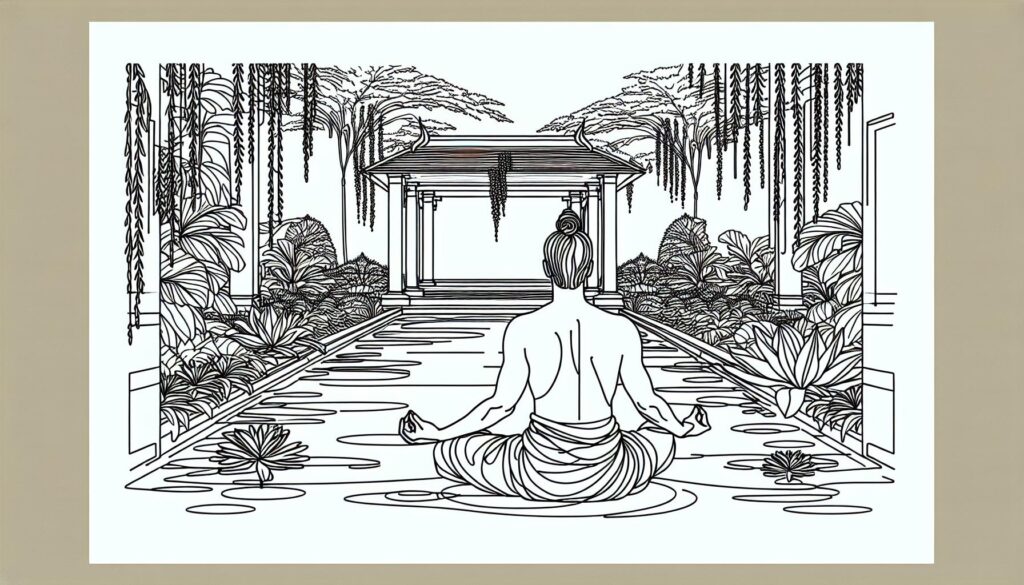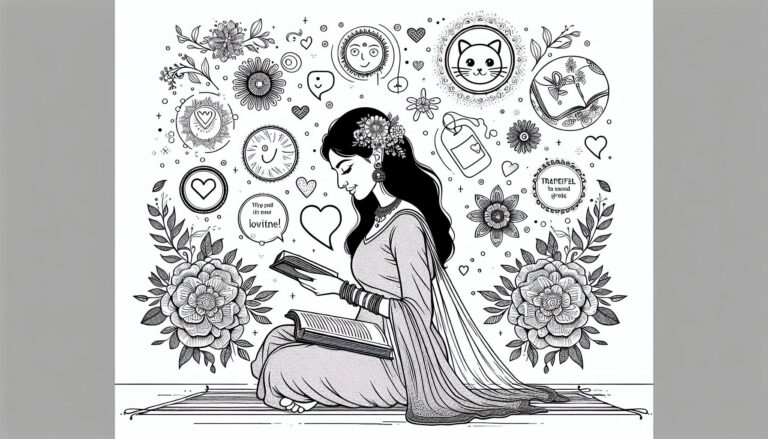Feeling overwhelmed by anxiety? I’ve been there. In this article, I’ll share powerful mindful techniques to help you navigate through those tough moments.
When anxiety strikes, it can feel like a storm raging inside your mind. Through mindfulness, I’ve discovered effective ways to calm the chaos and find inner peace.
Join me on this journey as we explore practical strategies to manage anxiety and cultivate a sense of serenity in our daily lives.
Understanding Anxiety
Anxiety is a common emotional response that affects many individuals worldwide. It can manifest in various forms, from general worry to panic attacks. Personally, I have experienced the overwhelming impact of anxiety and understand the importance of addressing it with effective strategies. It’s essential to recognize that anxiety is more than just feeling stressed or nervous; it can be debilitating and impact every aspect of life. Understanding the root causes of anxiety is the first step in managing it effectively.
One key aspect of anxiety is the tendency to dwell on potential future events and outcomes, leading to excessive worry. This constant state of apprehension can escalate quickly, causing physical symptoms such as racing heart, sweating, and difficulty breathing. Through my own journey, I have learned that mindfulness techniques can help break this cycle of overthinking and bring a sense of calm in moments of heightened anxiety. By understanding the triggers and patterns of anxiety, one can begin to navigate through these challenging moments with greater ease.
The impact of anxiety on mental and emotional well-being should not be underestimated. It can hinder personal relationships, work performance, and overall quality of life. Acknowledging the presence of anxiety and seeking support through mindfulness practices is crucial in regaining control and fostering a sense of inner peace. Through mindfulness, I have been able to develop a deeper awareness of my thoughts and emotions, allowing me to respond to triggers in a more balanced manner.
The Power of Mindfulness
In mindfulness, I find a valuable ally in my journey of navigating anxiety. By honing the ability to stay present in the moment, I can observe my thoughts and feelings without judgment. This practice empowers me to recognize anxiety triggers as they arise, preventing them from spiraling out of control.
Through regular mindfulness exercises, such as deep breathing and body scans, I cultivate a heightened awareness of my inner state. This heightened awareness allows me to respond to anxious thoughts and sensations with compassion and understanding, rather than getting entangled in a cycle of fear and worry.
One of the key benefits of mindfulness is its capacity to ground me in the here and now, pulling me out of the anxiety-ridden future scenarios my mind often constructs. Instead of being consumed by what might happen, I focus on what is happening in the present moment, finding solace in the simplicity of being fully present.
This intentional practice of mindfulness not only shields me from being swept away by anxious thoughts but also equips me with the necessary tools to manage anxiety effectively, fostering a sense of calm and resilience in the face of uncertainty.
Mindful Breathing Techniques
When it comes to managing anxiety, mindful breathing techniques are a powerful ally. Taking a few moments to focus on my breath can make a significant difference in how I navigate moments of stress and uncertainty. One technique I find particularly effective is diaphragmatic breathing, also known as belly breathing. By engaging my diaphragm and taking deep breaths, I can activate the body’s relaxation response, calming my mind and reducing anxiety levels.
Another beneficial technique is 4-7-8 breathing. Inhaling for four seconds, holding the breath for seven seconds, and exhaling for eight seconds helps regulate my breathing and promotes a sense of calm. This rhythmic breathing pattern soothes the nervous system, allowing me to ground myself in the present moment and alleviate anxious feelings. Focused breathing on the sensations of each inhale and exhale enhances mindfulness, bringing attention back to the breath whenever my mind starts to wander.
Box breathing is another effective technique that I incorporate into my daily routine. This method involves inhaling for a count of four, holding the breath for four counts, exhaling for four counts, and then pausing for four counts before starting the cycle again. This deliberate breathing pattern regulates my nervous system, reduces tension, and fosters a sense of inner peace. By practicing these mindful breathing techniques regularly, I equip myself with valuable tools to navigate anxiety and promote emotional well-being.
Grounding Exercises for Anxiety
When anxiety starts to kick in, grounding exercises can be incredibly helpful in bringing me back to the present moment. These techniques involve focusing on my surroundings, body sensations, or engaging with the environment to anchor myself and calm my racing thoughts.
Here are some grounding exercises that I find particularly effective in managing anxiety:
- 5-4-3-2-1 Technique: I start by naming 5 things I can see, 4 things I can touch, 3 things I can hear, 2 things I can smell, and 1 thing I can taste. This mindful practice helps me shift my focus away from anxious thoughts and into the present sensory experience.
- Mindful Walking: Taking a slow walk while paying attention to each step, the sensation of my feet touching the ground, and the movement of my body helps me connect with the physical sensations of walking and grounds me in the present moment.
- Progressive Muscle Relaxation: By tensing and then releasing each muscle group in my body, starting from my toes up to my head, I can release physical tension and promote relaxation, which in turn can help reduce anxiety levels.
- Visualization: I often close my eyes and visualize a safe, peaceful place such as a beach or a forest. I imagine all the details, sights, sounds, and smells of that environment, allowing me to escape momentarily from stress and anxiety.
- Square Breathing: Combining deep breathing with visualization, square breathing involves inhaling for a count of 4, holding the breath for 4, exhaling for 4, and holding again for 4. This rhythmic pattern helps regulate my breathing and calms my nervous system.
By incorporating these grounding exercises into my daily routine, I am better equipped to manage anxiety as they provide a quick and effective way to bring my focus back to the present moment and alleviate stress and worry.
Cultivating Inner Peace
When it comes to managing anxiety, Cultivating Inner Peace is essential. Practicing mindfulness techniques not only helps in the moment but also contributes to long-term emotional well-being. Through regular engagement with mindful activities, I find that my overall stress levels decrease, and my ability to navigate challenging situations improves significantly.
One powerful way to cultivate inner peace is through meditation. Taking just a few minutes each day to sit quietly, focus on the breath, and observe thoughts without judgment can work wonders. I’ve noticed that consistent meditation practice helps me become more aware of my emotions and reactions, allowing me to respond to stressors with greater clarity and composure.
Yoga is another transformative practice that has been instrumental in my journey to inner peace. The combination of movement, breath, and mindfulness in yoga not only enhances physical flexibility but also promotes mental resilience. Engaging in a yoga session leaves me feeling balanced, centered, and ready to face whatever challenges come my way.
In addition to meditation and yoga, journaling has been a valuable tool in nurturing inner peace. Reflecting on my thoughts, feelings, and experiences through writing provides a sense of release and clarity. I’ve found that maintaining a gratitude journal, where I jot down things I am thankful for each day, helps shift my focus to the positive aspects of my life, fostering a sense of peace and contentment.
Overall, dedicating time to practice mindfulness techniques like meditation, yoga, and journaling has been transformative in my journey to managing anxiety. These activities not only promote inner peace but also cultivate resilience, emotional awareness, and a deeper connection to the present moment.
Key Takeaways
- Anxiety Understanding: Recognize anxiety triggers, understand its impact on mental and emotional well-being, and address root causes for effective management.
- Power of Mindfulness: Stay present in the moment, observe thoughts without judgment, and use mindfulness to recognize and manage anxiety triggers.
- Mindful Breathing Techniques: Engage in diaphragmatic breathing, 4-7-8 breathing, and box breathing to activate relaxation responses, regulate breathing, and promote calmness.
- Grounding Exercises: Use techniques like 5-4-3-2-1, mindful walking, progressive muscle relaxation, visualization, and square breathing to anchor yourself in the present during moments of anxiety.
- Cultivating Inner Peace: Practice meditation, yoga, and journaling to reduce overall stress levels, enhance emotional well-being, and foster resilience and contentment in managing anxiety.
Conclusion
Incorporating mindfulness techniques like meditation, yoga, and journaling into your daily routine can significantly aid in managing anxiety. These practices not only reduce stress levels but also enhance emotional well-being in the long run. Meditation helps in increasing self-awareness, while yoga builds mental resilience and physical flexibility. Journaling, especially keeping a gratitude journal, offers clarity and a positive shift in perspective. By engaging in these activities consistently, you can cultivate inner peace, improve emotional awareness, and develop valuable tools for navigating anxiety effectively. Remember, taking small steps towards mindfulness each day can lead to significant improvements in your overall well-being.



